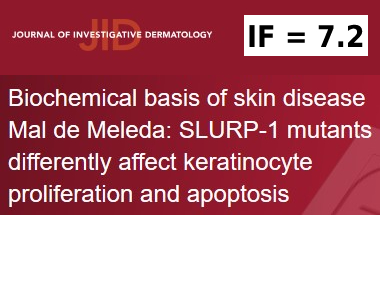
The role of natural mutations of the human protein SLURP-1 in the pathogenesis of Mal de Meleda skin disease has been determined
Researchers from the Department of Bioengineering and the Department of Structural Biology of the IBCh RAS received new functional and structural information on the role of mutations in the SLURP-1 protein in the pathogenesis of Mal de Meleda (MDM), a recessively inherited keratoderma. SLURP-1 is a paracrine regulator of keratinocyte homeostasis interacting with the α7 type nicotinic acetylcholine receptor (α7-nAChR) and it participates in control of growth, terminal differentiation, apoptosis and cornification of keratinocytes. The study showed that effect of SLURP-1 mutants on keratinocyte homeostasis depends on a location in the molecule, where the mutation is appeared. Effects can lead to mild or severe forms of Mal de Meleda, and can include changes in the antiproliferative and apoptotic properties of SLURP-1. Using the obtained functional data, model of the SLURP-1/α7-nAChR complex was built. The work was published in the Journal of Investigative Dermatology under support of the Russian Science Foundation. Learn more
29 марта 2021 года

